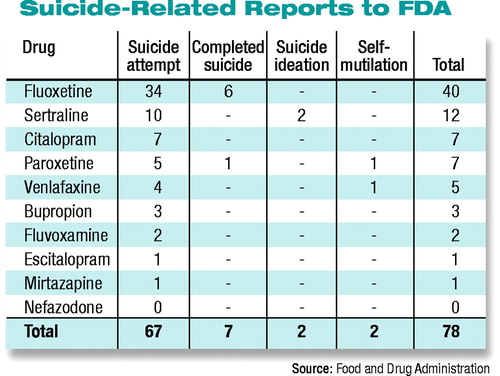APA Convenes Conference On Jail-Diversion Programs
It is often said that you can judge a society by how well it treats its most vulnerable members.
If that’s true, this country deserves harsh judgment for its inhumane practice of criminalizing people with mental illnesses: they receive inadequate mental health treatment and are often placed in isolation, which exacerbates their illness.

APA President Marcia K. Goin, M.D. (right), talks with (from left) Henry Steadman, Ph.D., president of Policy Research Associates; incoming APA President-elect Steven Sharfstein, M.D., and Henry Weinstein, M.D., chair of APA’s Corresponding Committee on Jails and Prisons.
Other participants represented several organizations including the federal Center for Mental Health Services, National GAINS Center for People With Co-Occurring Disorders in the Justice System, National Association of State Mental Health Program Directors, Bazelon Center for Mental Health Law, and Council of State Governments.
 The conference theme was the fiscal implications of criminalizing people with mental illnesses. “We could be more persuasive in advocating for increased funding for community treatment and diversion programs if we had data showing that it is more cost-effective than treating and maintaining people with mental illnesses in jails,” Goin explained.
The conference theme was the fiscal implications of criminalizing people with mental illnesses. “We could be more persuasive in advocating for increased funding for community treatment and diversion programs if we had data showing that it is more cost-effective than treating and maintaining people with mental illnesses in jails,” Goin explained.
People with mental illnesses make up at least 16 percent of inmates in U.S. prisons and jails compared with 4 percent to 5 percent of the general population, according to a 1999 Department of Justice report, “Mental Health Treatment of Inmates and Prisoners.”
Inmates with mental illness are more expensive to treat than other inmates due to overtime payments to corrections staff for suicide watches, higher medication costs, and longer stays, said Daniel Souweine, policy analyst at the Council of State Governments.
Diversion Programs Promising

Henry Steadman, Ph.D., reports that mentally ill people in jail-diversion programs had fewer jail and hospitalization days than mentally ill people who were not diverted.
PRA operates the National GAINS Center for People With Co-Occurring Disorders in the Justice System, an initiative funded by the Substance Abuse and Mental Health Services Administration.
Steadman cited seven published studies of diversion programs conducted between 1995 and 2002. The combined results showed that diverted individuals had fewer jail days and psychiatric hospital days than mentally ill individuals who were not diverted, according to Steadman.
Diverted individuals were typically women with a primary diagnosis of schizophrenia or mood disorder with psychotic features, on federal Supplemental Security or disability income, and with higher scores on the Colorado Symptom Inventory than the nondiverted group, indicating that the diverted individuals had better mental health and quality of life, according to Steadman.
The SAMHSA Jail Diversion Initiative, a nine-site unpublished study of people with co-occurring disorders between 1998 and 2000, produced similar results, according to Steadman. PRA provided technical assistance and some data analysis for the SAMHSA initiative.
“Despite more days in the community, diverted participants had comparable re-arrest rates in the 12-month follow-up period, which shows the risk to public safety isn’t greater, which is often raised in arguments against jail-diversion programs,” Steadman said.
Bottom Line: More Data Needed
Alexander Cowell, Ph.D., an economist for the Research Triangle Institute International, analyzed the cost-effectiveness of jail diversion compared with standard jail treatment at four of the nine study sites. Cowell said at the conference that cost-effectiveness was defined as “the costs of resources associated with the intervention and the effectiveness of the intervention.”
One year later, jail costs decreased in jail-diversion programs while treatment costs increased due to more intensive services. As a result, there was no cost savings in jail-diversion programs compared with standard jail practices.
Treatment in diversion programs produced only one significant clinical outcome at each of the four sites. For example, diversion was associated with a reduced risk of drug use by 80 percent at no extra cost at one site and improved scores on the Colorado Symptom Inventory at two other sites, according to Steadman.
He pointed out, however, “A limitation of these studies is that the data were collected for only one year after diversion to treatment. What we really need is a well-designed prospective, longitudinal study, but no one has taken that on yet.”
To that end, David Hughes of the Human Services Research Institute has developed a computerized-simulation model that can be used to project treatment outcomes and cost estimates for mental health treatment in jail-diversion programs and the criminal justice system. The simulation model is being pilot-tested in at least one jail-diversion site.
“The model strongly suggests that there may be a cost savings two to three years after diversion,” Steadman said.
The participants agreed that it would be worthwhile to produce a resource document on the fiscal implications of jail diversion and criminalization that could be used by different audiences and updated as the need arose.
The GAINS Center has published several resources on jail diversion, including some focused specifically on women and juveniles. The publications are posted online at www.gainsctr.com/b/publications/default.asp#6. ▪



